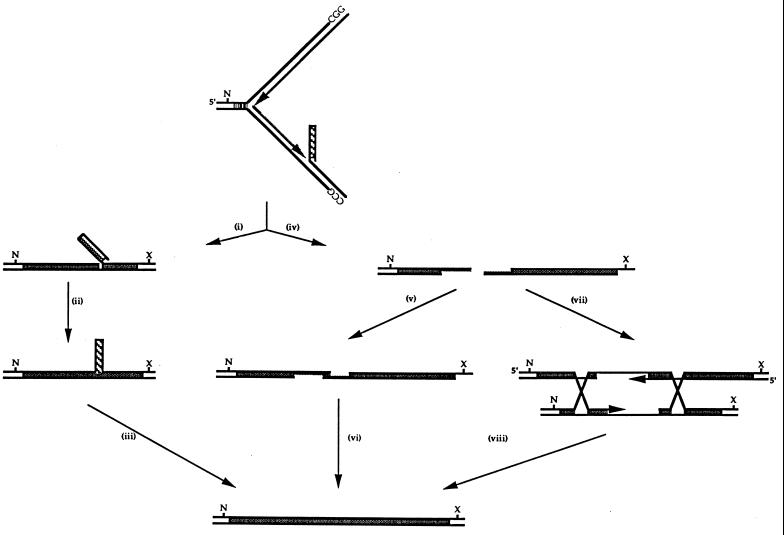FIG. 4.
Model of FMR1 array contraction and expansion during in DNA synthesis. FMR1 (CGG)n expansion occurs predominantly in the (−) orientation, where replication proceeds from ARS314 and the lagging strand is G rich. The rare expansion events in the (+) orientation seen in the rad27 background could arise by the same mechanism upon replication from the opposite direction. We suggest that expansions in wild-type cells occur due to the propensity for stable secondary-structure formation of the G-rich strand to drive the formation of a Rad27p-resistant flap and that subsequent displacement synthesis occurs. After RNA primer removal by RNase H, displacement is probably required for the removal of the last ribonucleotide by Rad27p, since it requires single-stranded template for its activity. Resolution of this incompletely replicated region may occur through several pathways, including bypass replication (i to iii) by several possible routes following strand breakage and 5′-to-3′ excision (iv). Single-strand annealing of the repetitive ends (v) would be followed by DNA synthesis and ligation (vi). Alternatively, recombination with the sister chromatid as template could allow expansion (or contraction) if invasion and annealing occurred out of register (vii and viii). In a rad27 mutant, absence of this protein allows single-stranded-DNA secondary-structure formation to proceed unhindered as displacement synthesis from the 5′ Okazaki fragment progresses through the unprocessed flap region. Similar events could take place during DNA repair processing.

